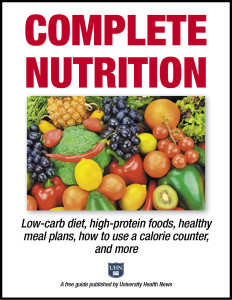At Risk for Severe Depression? Understand Which Type Is Taking Hold
Depression—a mood disorder that affects an estimated one in 10 Americans at some point in their lives—is a complex mental health condition that comes in a variety of forms, each with distinct characteristics. Whether mild or severe, depression in anyone should be addressed.
“The concept of ‘depression’ is actually a broad category that includes multiple diagnoses,” explains Andrew A. Nierenberg, MD, Director of the Bipolar Clinic and Research Program and Associate Director of the Depression Clinical and Research Program at Massachusetts General Hospital.
“The most common of these is major depressive disorder, or MDD, which effects nearly 7 percent of Americans over the age of 18,” Nierenberg adds. “However, there are also a number of other subsets of depression, each with their unique symptoms and treatments. Finding out which type of depression a person has is essential in determining which treatment will be most effective.”
Eat Right, Starting Now!
Download this expert FREE guide, Complete Nutrition: Low-carb diet, high-protein foods, healthy meal plans, how to use a calorie counter, and more.
Create healthy meal plans and discover the Superfoods that can transform your plate into a passport to better health.
Seek Help
Depression is a serious medical condition that has both mental and physical effects, Dr. Nierenberg stresses.
“It’s important to seek professional help for any long-lasting depression that interferes with your daily life, complicates your relationships with others, or involves distressing thoughts of self-harm or other rash actions,” he advises. “There are many effective treatments for depression and lifestyle measures [see “What You Can Do” sidebar] that have been shown to help improve mood as well.”
Distinct Categories of Depression
The types of depression affecting adults listed below are among those described in the Diagnostic and Statistical Manual of Mental Disorders (DSM-5), a handbook used by health care professionals as the authoritative guide to the diagnosis of mental disorders.
- Major Depressive Disorder: Referred to as MDD, this common form of depression is characterized by low mood representing a change from normal mood levels that lasts two weeks or more, loss of interest and/or pleasure in daily activities, reduced energy, and an impairment of functioning. Although this is not inevitable, major depressive disorder often occurs more than once in a lifetime. MDD is most commonly treated with antidepressant medications, psychotherapy, or a combination of both.
- Share your feelings. Instead of withdrawing. turn to people you trust when you are feeling down.
- Exercise. Research suggests that exercise affects brain chemistry in ways that help to boost mood.
- Look after your health. Get plenty of sleep, eat a nutritious, low-calorie diet, and take measures to avoid or reduce stress. Avoid unhealthy activities such as smoking or excessive drinking (more than two drinks a day).
- Spend time with optimistic people. They will help reinforce the positive aspects of life.
- Persistent Depressive Disorder (Dysthymia). This is a somewhat milder, chronic form of depression that causes depressed mood for most days over a period of two years or more. The symptoms include some, but not all, of those associated with MDD and may vary in severity over the course of the illness. As with MDD, persistent depressive disorder is usually treated with psychotherapy, antidepressant medications, or a combination of both.
- Seasonal Affective Disorder (SAD). This form of depression is most common in winter when exposure to sunlight is more limited. It is associated with feelings of severe depression that often respond to treatment with light therapy—exposure to bright light (Full Spectrum Lighting) for 15 to 30 minutes a day—sometimes combined with medication and/or psychotherapy. (For more, see our posts “Do You Have ‘SAD’ Disorder?” and “How Seasonal Affective Disorder (SAD) Can Drive Mood.”)
- Postpartum Depression. A form of depression experienced by women in the weeks and months after giving birth, postpartum depression is significantly more severe than the more common mood swings associated with the hormonal and chemical changes and lifestyle adjustments that accompany the birth of a child. This disorder, which affects an estimated 10 to 15 percent of new mothers, usually responds well to treatment with antidepressant medications.
- Premenstrual Dysphoric Disorder (PMDD). Women with this form of depression experience low mood and other symptoms, such as irritability, fatigue, mood swings, trouble focusing, and anxiety, in the week before their menstrual cycles. The symptoms disappear about one week after menses. Up to 8 percent of women experience these symptoms, possibly because of hormonal changes linked with monthly periods. PMDD is treated with antidepressants.
- Psychotic Depression. This type of depression is complicated by the addition of symptoms of psychosis, such as hallucinations, delusions, and paranoia. The condition is usually treated with a combination of antidepressant and antipsychotic drugs.
- Bipolar Disorder. It involves periods of depression, but technically, bipolar disorder is not a type of depression, since the depression alternates with periods of extreme high mood (mania), often with normal moods between these extremes. This distinction places it in a class of its own. People who have depression that includes at least three manic symptoms, but not a sufficient number to satisfy criteria for bipolar disorder with its full-blown manic episodes, may receive the diagnosis of “MDD with mixed features.”
Certain lifestyle strategies may be helpful for people who are coping with depressed mood. They include:
The post At Risk for Severe Depression? Understand Which Type Is Taking Hold appeared first on University Health News.
Read Original Article: At Risk for Severe Depression? Understand Which Type Is Taking Hold »
Powered by WPeMatico


